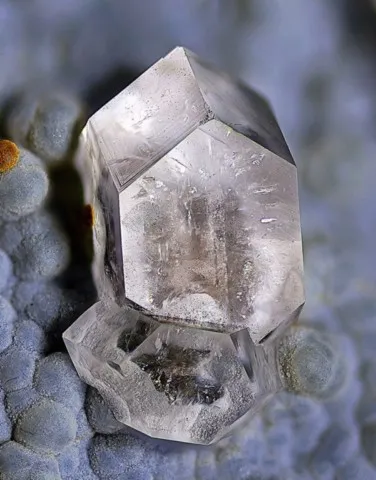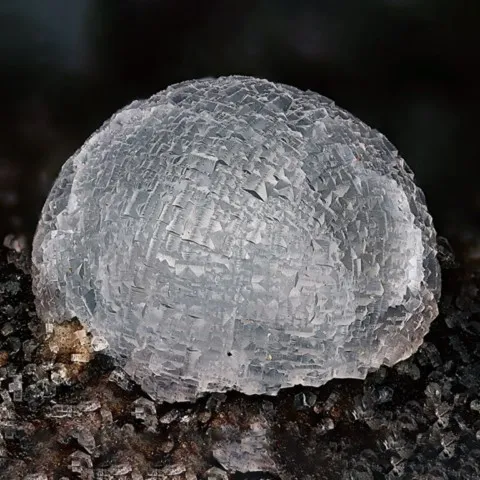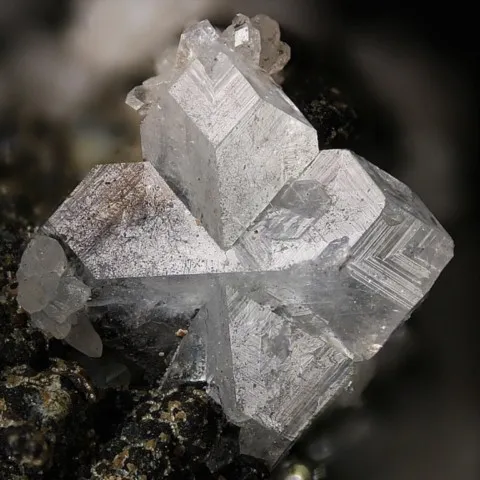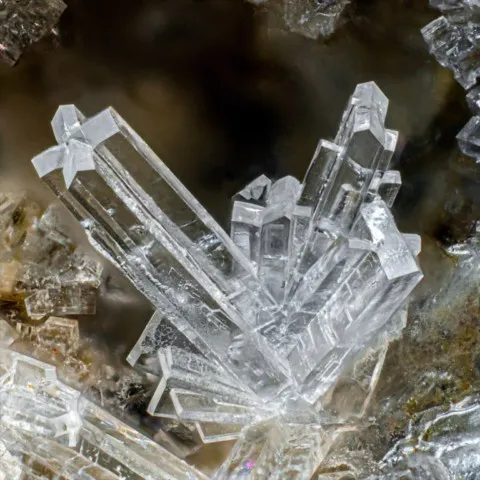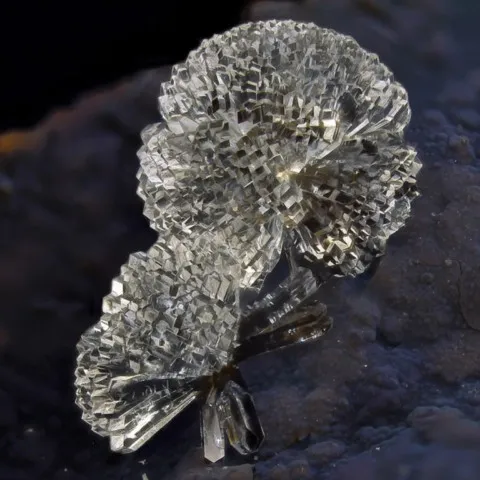PHILLIPSITE
Class : Silicates
Subclass : Tectosilicates
Crystal system : Monoclinic
Chemistry : KCaAl3Si5O16 6H2O
Rarity : Uncommon
Phillipsite belongs to the group of zeolites and more particularly to the family of pseudocubic zeolites. It owes its name to William Phillips, one of the founding geologists and mineralogists of the Geological Society of London. It is a frequent zeolite in the cracks and cavities of basic and ultrabasic rocks, notably basalts, known (but rarer) in the deposits of salt lakes and hot springs. Sometimes colorless, phillipsite is commonly white, sometimes reddish. Along with chabazite and harmotome, phillipsite is a good molecular sieve, a major industrial property used in hydrocarbon refining, deriving from the channel structure of zeolites.
Main photo : Phillipsite from Rossberg Quarry, Hesse, Germany © Volker Betz
Phillipsite in the World
Phillipsite in France
The cavities of the basalts of the French Massif Central are sometimes lined with small phillipsite crystals : Gignat and Perrier (Puy-de-Dôme) and Espalion (Aveyron).
Twinning
The phillipsite is always twinned in a more or less complex way associating two, four, eight or twelve crystals, and simulating tetragonal buildings, themselves grouped into rhombododecahedral buildings in a cross.
Fakes and treatments
No fake inventories for this mineral species.
Hardness : 4 to 4.5
Density : 2.2
Fracture : Irregular
Trace : White
TP : translucent to transparent
RI : 1.483 to 1.514
Birefringence : 0.003 to 0.009
Optical character : Biaxial +/-
Pleochroism : None
Fluorescence : None
Solubility : Hydrochloric acid
Magnetism : None
Radioactivity : None

